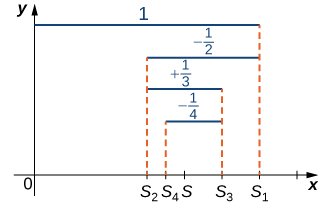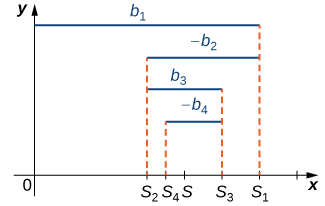| << Chapter < Page | Chapter >> Page > |
So far in this chapter, we have primarily discussed series with positive terms. In this section we introduce alternating series—those series whose terms alternate in sign. We will show in a later chapter that these series often arise when studying power series. After defining alternating series, we introduce the alternating series test to determine whether such a series converges.
A series whose terms alternate between positive and negative values is an alternating series . For example, the series
and
are both alternating series.
Any series whose terms alternate between positive and negative values is called an alternating series. An alternating series can be written in the form
or
Where for all positive integers n .
Series (1), shown in [link] , is a geometric series. Since the series converges. Series (2), shown in [link] , is called the alternating harmonic series. We will show that whereas the harmonic series diverges, the alternating harmonic series converges.
To prove this, we look at the sequence of partial sums ( [link] ).
Consider the odd terms for Since
Therefore, is a decreasing sequence. Also,
Therefore, is bounded below. Since is a decreasing sequence that is bounded below, by the Monotone Convergence Theorem, converges. Similarly, the even terms form an increasing sequence that is bounded above because
and
Therefore, by the Monotone Convergence Theorem, the sequence also converges. Since
we know that
Letting and using the fact that we conclude that Since the odd terms and the even terms in the sequence of partial sums converge to the same limit it can be shown that the sequence of partial sums converges to and therefore the alternating harmonic series converges to
It can also be shown that and we can write

□
More generally, any alternating series of form (3) ( [link] ) or (4) ( [link] ) converges as long as and ( [link] ). The proof is similar to the proof for the alternating harmonic series.

An alternating series of the form
converges if
This is known as the alternating series test .

Notification Switch
Would you like to follow the 'Calculus volume 2' conversation and receive update notifications?